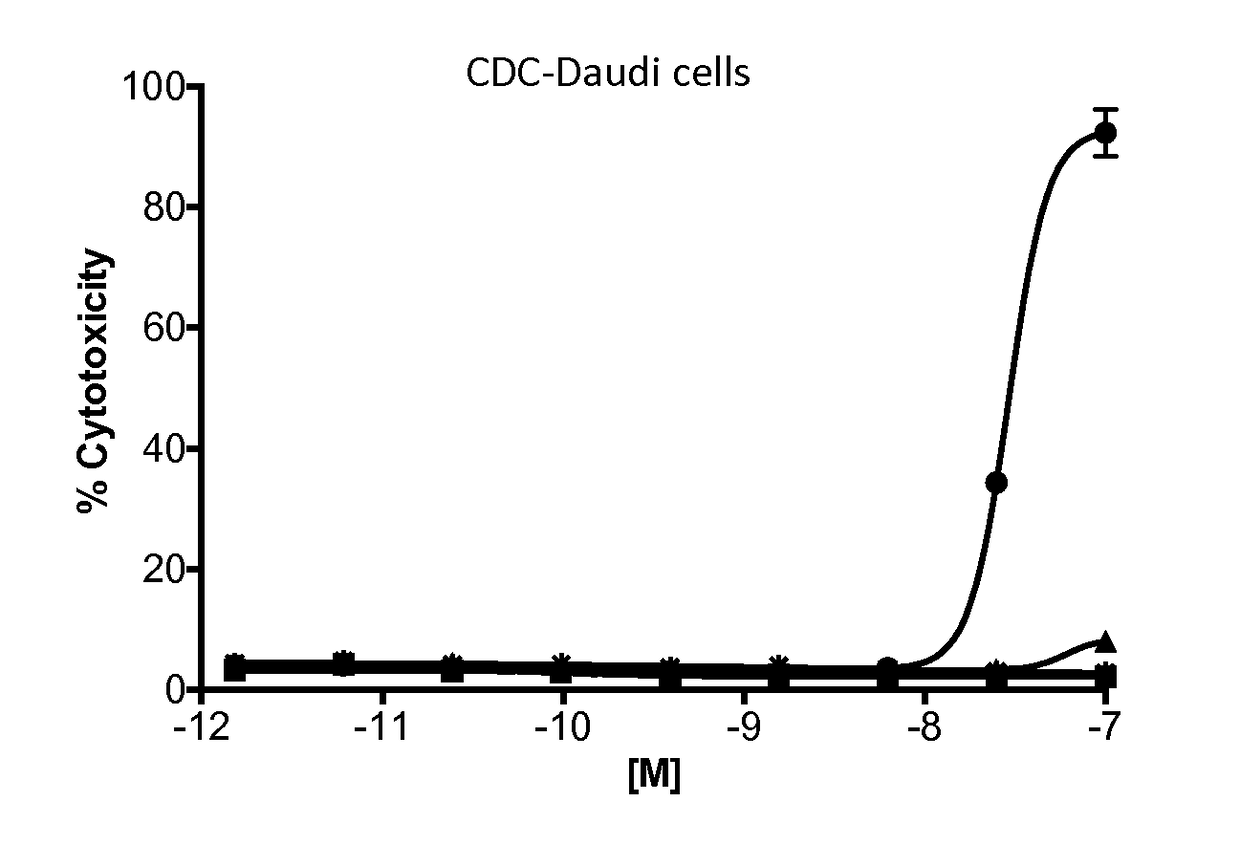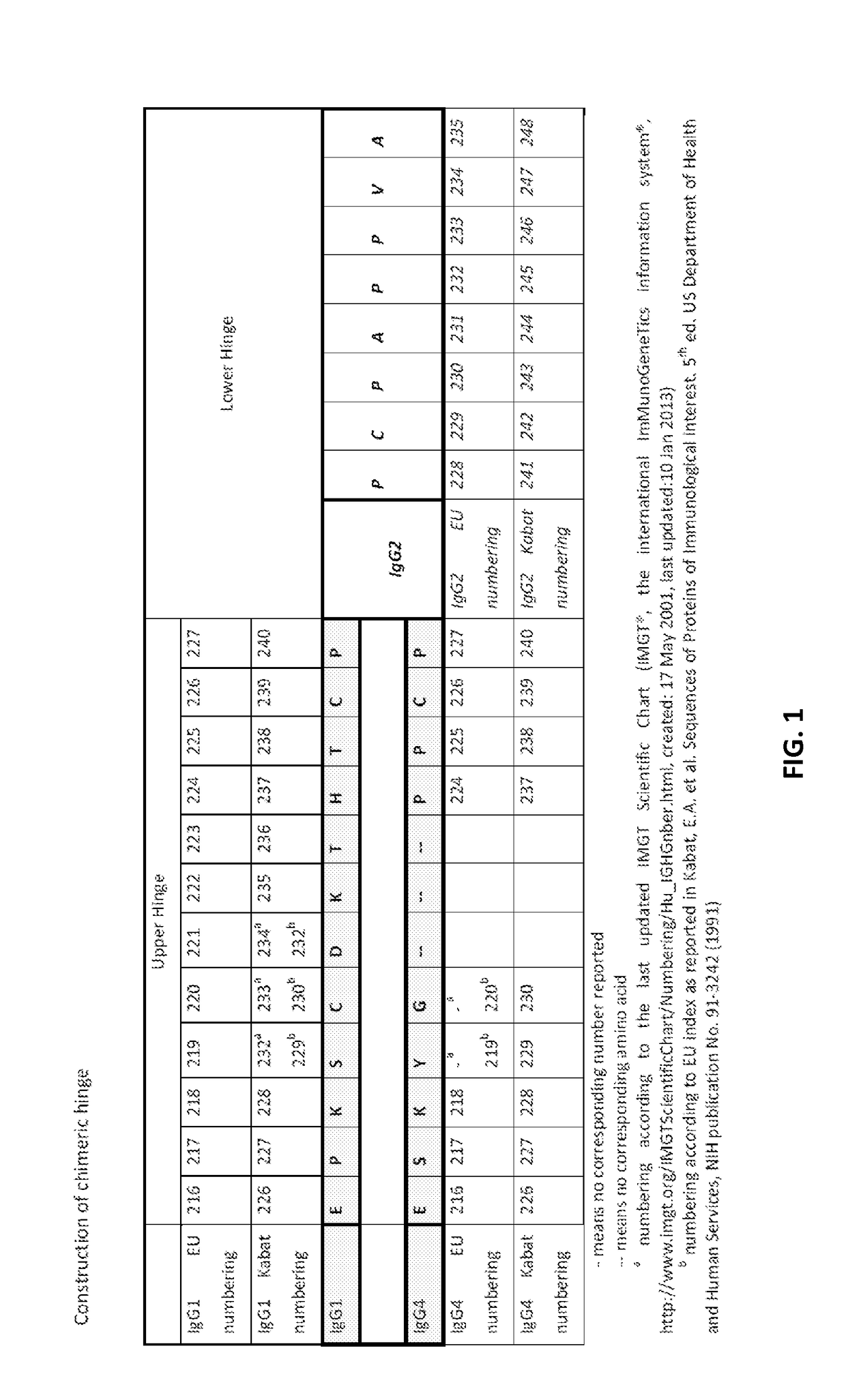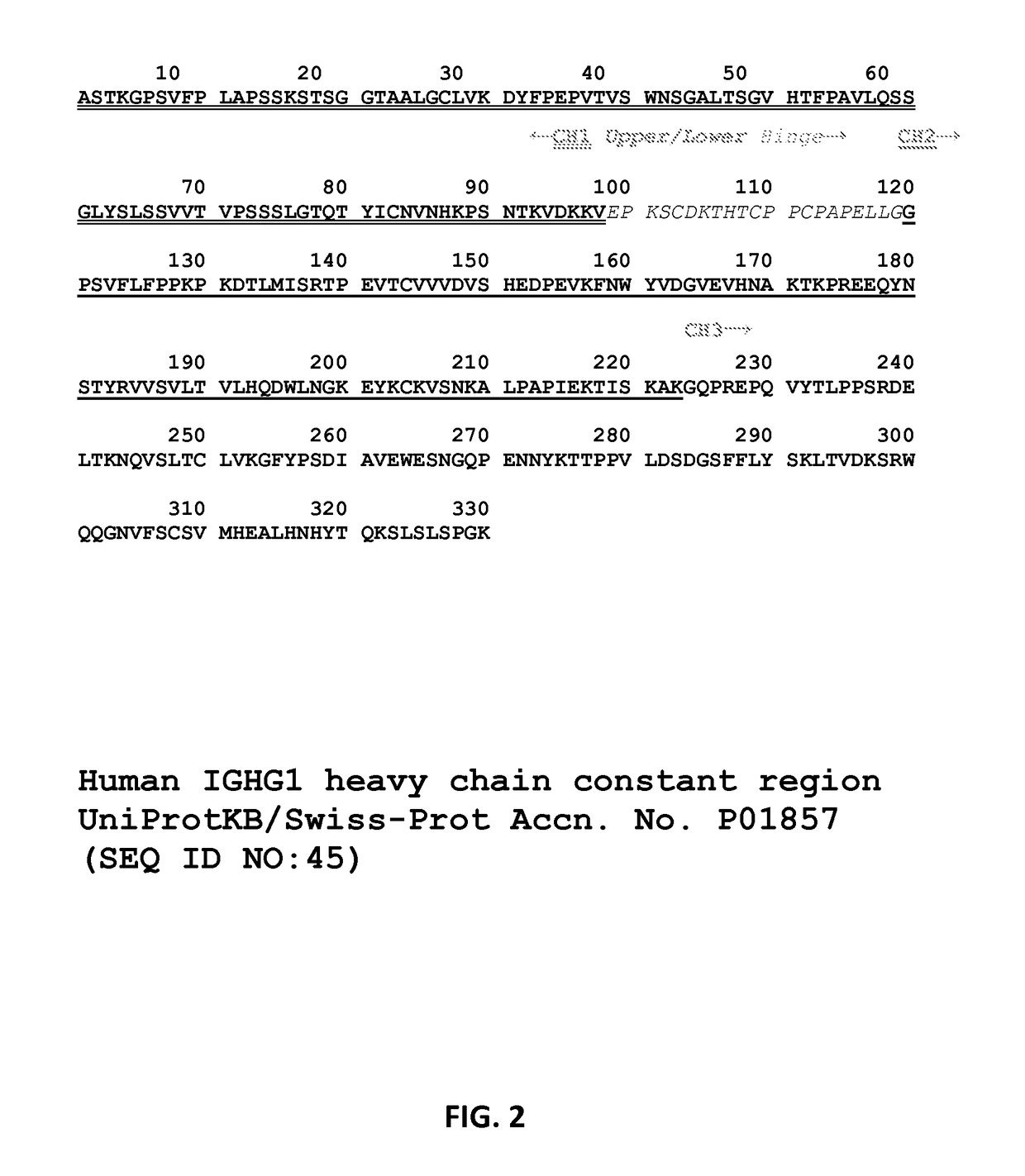Methods for tumor treatment using cd3xcd20 bispecific antibody
a tumor and antibody technology, applied in the field of bispecific antibodies targeting cd20 and cd3 antigens, can solve the problems of counterintuitive tumor therapy design of tumor targeting antibodies with reduced effector function, and achieve the effects of enhancing the effectiveness of stimulating the immune system, minimizing toxic effects, and stimulating t cell activation
- Summary
- Abstract
- Description
- Claims
- Application Information
AI Technical Summary
Benefits of technology
Problems solved by technology
Method used
Image
Examples
example 1
n of Anti-CD3 and Anti-CD20 Antibodies
[0254]Several methods are known for isolating anti-CD3 or anti-CD20 antibodies. Fully human anti-CD3 antibodies used in the following examples were isolated directly from antigen-positive B cells without fusion to myeloma cells, as described in US 2007 / 0280945A1.
[0255]Additional examples of anti-CD3 antibodies may be used in the methods, and description of such antibodies and the biological properties of such anti-CD3 antibodies are described in PCT International Application No. PCT / US13 / 60511, filed on Sep. 19, 2013, which is herein incorporated by reference in its entirety. Exemplary anti-CD20 antibodies and biological properties of such anti-CD20 antibodies are described in U.S. Pat. No. 7,879,984 and PCT International Application No. PCT / US13 / 60511, filed on Sep. 19, 2013, each incorporated by reference herein.
[0256]The anti-CD20 antibody and its method of making the antibody used to construct the bispecific antibodies of this example is as ...
example 2
n of Bispecific Antibodies that Bind CD3 and CD20
[0258]Bispecific antibodies comprising an anti-CD3-specific binding domain and an anti-CD20-specific binding domain were constructed with the above sequences using standard methodologies wherein a heavy chain and a light chain from an anti-CD3 antibody were combined with a heavy chain from an anti-CD20 antibody.
[0259]As such, the bispecific antibodies created in accordance with the present Example comprise two separate antigen-binding domains (i.e., binding arms). The first antigen-binding domain comprises a heavy chain variable region derived from an anti-CD20 antibody (“CD20-VH”), paired with a light chain variable region derived from an anti-CD3 antibody (“CD3-VL”). The CD20-VH / CD3-VL pairing creates an antigen-binding domain that specifically recognizes CD20. The second antigen-binding domain comprises a heavy chain variable region derived from an anti-CD3 antibody (“CD3-VH”), paired with a light chain variable region derived from...
example 3
Heavy Chain Construction
[0271]Generating the chimeric heavy chains, for example chimeric CH IgG4 (SEQ ID NO: 26) and a chimeric CH IgG1 (SEQ ID NO: 30), was done using standard cloning techniques. First, the chimeric IgG4 CH was generated through a two-step PCR amplification process. Two PCR fragments, Fragment 1 and 2, were amplified using a starting vector construct pR001 containing a wild-type hIgG4 CH DNA using primer pairs flanking the CH region, P1-P2 and P3-P4, respectively. See Table 9 below.) The primers introduced both the desired IgG2 lower hinge sequence (which encodes SEQ ID NO: 52) and the flanking restriction sites into the fragments. These two fragments were then joined using PCR primers P2 and P4. The resulting sequence was inserted into pR001 via Xho1-Not1 restriction sites generating a vector construct pR002 that contains a chimeric IgG4 CH having an IgG2 lower hinge sequence. The sequence was confirmed using primers P10 and P11.
[0272]In addition, a chimeric IgG1 ...
PUM
| Property | Measurement | Unit |
|---|---|---|
| size | aaaaa | aaaaa |
| residual | aaaaa | aaaaa |
| affinity | aaaaa | aaaaa |
Abstract
Description
Claims
Application Information
 Login to View More
Login to View More - R&D
- Intellectual Property
- Life Sciences
- Materials
- Tech Scout
- Unparalleled Data Quality
- Higher Quality Content
- 60% Fewer Hallucinations
Browse by: Latest US Patents, China's latest patents, Technical Efficacy Thesaurus, Application Domain, Technology Topic, Popular Technical Reports.
© 2025 PatSnap. All rights reserved.Legal|Privacy policy|Modern Slavery Act Transparency Statement|Sitemap|About US| Contact US: help@patsnap.com



